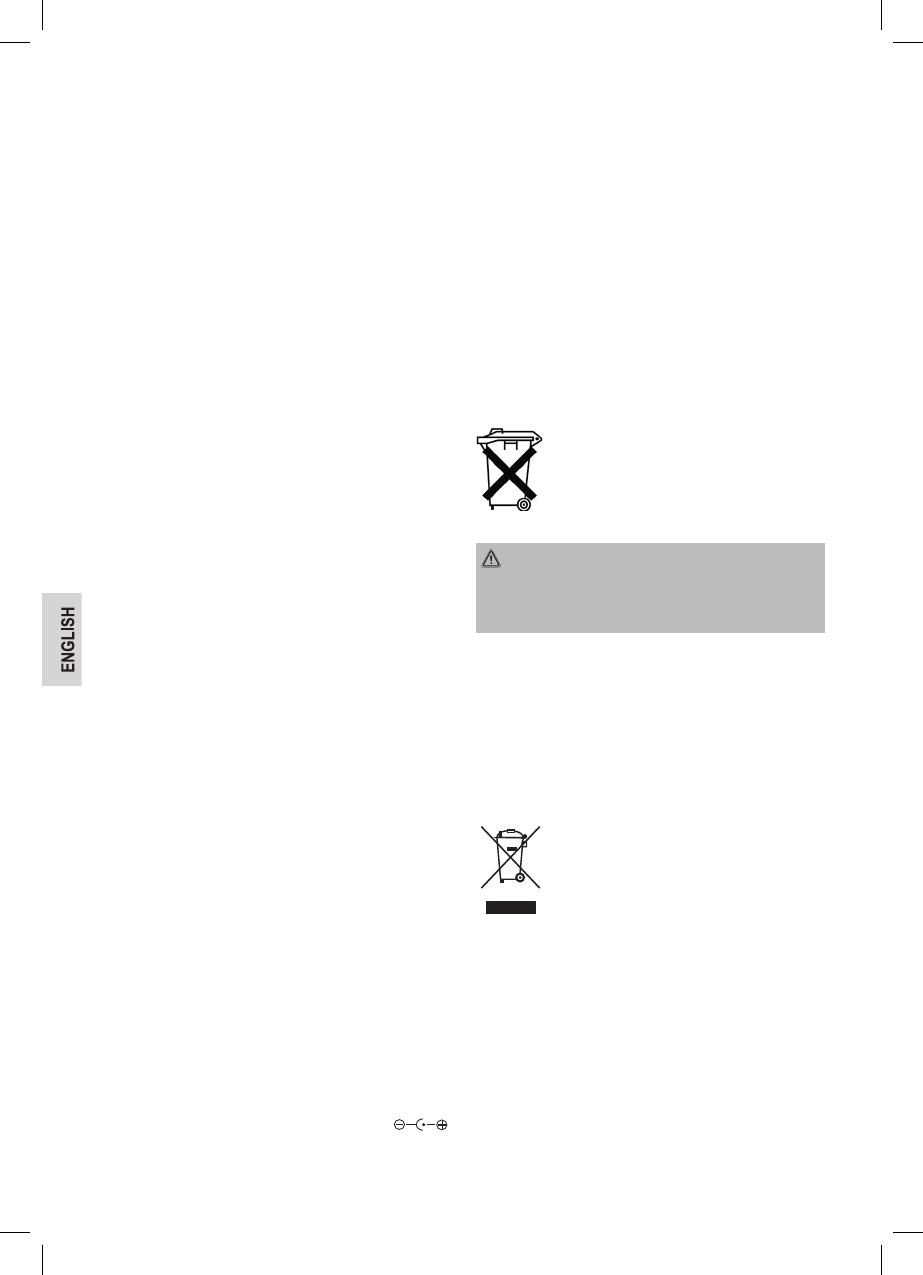
30
Components 6 to 13
• These components can be rinsed off under running water.
If need be, clean the components in warm soapy water
using a soft brush.
• Allow the components to dry before you reassemble the
device.
Storage
• Clean the appliance as described and allow it to dry.
• We recommend that you keep the appliance in the original
packaging if it will not be used for long periods.
• Always store the appliance out of the reach of children in a
dry, well ventilated place.
Troubleshooting
The device does not function.
Possible cause:
The switch position has not been set correctly.
Remedy:
Check the switch position.
Possible cause:
The rechargeable battery is empty.
Remedy:
• Recharge the battery or
• use the device via 12 V mains operation.
The device does not work with the 12 V connection cable.
Possible cause:
Some cars require the ignition to be turned on in order to use
the on-board power socket.
Possible cause:
The fuse in the plug of the 12 V connection cable is defective.
Remedy:
Replace the fuse. To do so, unscrew the knurled nut. New
fuses (10 A) are available in specialist shops.
Possible cause:
The on-board power socket of your car is defective.
Remedy:
Contact your car technician for help.
Technical Data
Model: .......................................................................AKS 713 CB
Net weight: ........................................................... approx. 1.13 kg
Mains adapter
Protection class: .......................................................................... II
Input: ............................................AC 100-240 V, 50/60 Hz, 0.2 A
Output: ..............................................................DC 18 V, 250 mA
Polarity: ..........................................................................
Battery: ...........................................10 x 1.2 V, 1400 mAh NiMH
Operating time: .......................................... 20 minutes maximum
Charging time: .................................................................12 hours
12 V connection
Voltage: ............................................................................ DC 12 V
Power input: ........................................................................... 5.2 A
The right to make technical and design modications in the
course of continuous product development remains reserved.
This device has been tested according to all relevant current
CE guidelines, such as electromagnetic compatibility and low
voltage directives, and has been constructed in accordance
with the latest safety regulations.
Disposal
Removing the battery / Battery disposal
This appliance contains rechargeable nickel-
metal-hydride batteries.
Remove these batteries before you dispose of
the appliance.
As a consumer you are legally obliged to return
the spent batteries/battery packs.
WARNING:
• Disconnect the appliance from the mains before you
remove the batteries!
• Only remove the batteries if spent.
• Use a small Phillips screwdriver to loosen the 6 screws
from the housing of the device.
• Remove both halves of the housing.
• Use scissors to cut the wires on the batteries.
• Remove the batteries.
• You may dispose of them at a collection site for spent bat-
teries or special waste. Ask your local authority for details.
Meaning of the “Dustbin” Symbol
Protect our environment: do not dispose of
electrical equipment in the domestic waste.
Please return any electrical equipment that
you will no longer use to the collection points
provided for their disposal.
This helps avoid the potential effects of incor-
rect disposal on the environment and human health.
This will contribute to the recycling and other forms of reutilisa-
tion of electrical and electronic equipment.
Information concerning where the equipment can be disposed
of can be obtained from your local authority.





